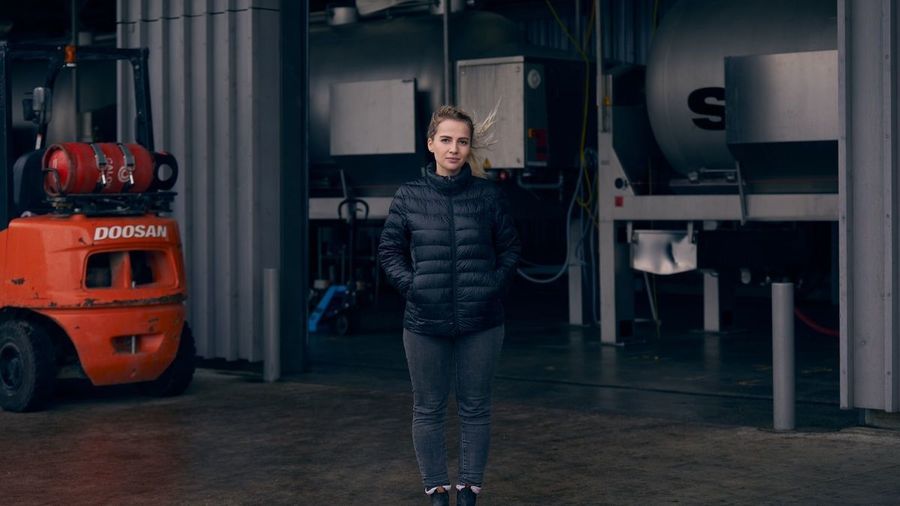Soil. Grapes. Weather. All critical elements in winemaking. But equally important is time. Time in the vineyard. Time in tanks, barrels and bottles. Time developing into perfection in a glass. What happens at each stage of the wine ageing process has a profound effect on how the finished wine tastes. So what exactly is the difference between cork ageing and lees ageing?
Lees, please!
What are lees and why do sparkling wines love them? Sparkling wine starts life as still wine. The magic starts to happen when winemakers add what’s known as a tirage liqueur – essentially a sugar and yeast solution – to the bottle just before the wine goes in. “We prep our tirage culture three or four days beforehand so it’s acclimated and ready to ferment when it hits the bottle,” explains Alastair “AJ” Benham, Assistant Winemaker at Gusbourne. Then you wait. Around 50 days for the yeast to eat the sugar and get the fermentation going. When there’s no more sugar to feast on, the yeast dies and turns into lees during a process called autolysis.
“The outer cell wall of the yeast starts to break down and releases mannoproteins and other compounds that benefit the wine,” says AJ. “They add depth and complexity, flavour and aroma – those creamy, buttery, brioche characteristics we associate with sparkling wine. And of course that soft moussey foaminess.”
The longer wine ages on the lees, the more pronounced these characteristics. The other benefit of the lees is what’s known as its redox potential, which stops the wine from prematurely oxidating. “Wine that’s aged longer on lees will retain its freshness longer than if it was only aged on cork,” AJ adds.
During lees ageing, wines are sealed with a bidule – a small plastic plug that goes in the neck of the bottle – and a crown cap on top. It’s only after lees ageing at a controlled temperature – around 12 degrees Celsius – that the wine is prepared for disgorgement and corking. The riddling process regularly turns and eventually up-ends the bottles so that the lees particles collect at the bidule.
At Gusbourne, we age our sparkling wines on the lees for a minimum of 28 months. Then it’s time for the lees to hand over to cork.
Cork, of course.
When the winemakers deem the wine ready for the next stage of ageing – they test, taste and analyse throughout the process – the necks of the bottles are frozen to minus 26 degrees Celsius, trapping the lees in the bidule. “There’s around six bar of pressure behind the bidule,” AJ explains, “so when the crown cap is removed, the ice plug full of frozen lees is immediately ejected, leaving a nice clear sparkling wine.”
Then comes the dosage – the addition of a carefully judged amount of sugar solution to balance out the wine’s acidity. “The difference between not adding any sugar and adding even just a little, say four grams, is dramatic,” says AJ. “Mostly due to the Maillard reaction, which is essentially the same thing that happens when you caramelise food. The sugars react with the acids and create this lovely toasty, nutty, caramel character. The majority of our wines get dosage and are better for it – it’s all about obtaining that balance between acidity and sweetness, perfectly integrated. A lot of that is going to come during cork ageing.”
And finally on goes the cork.
The process of disgorgement and dosage comes as a bit of a shock to the wine – letting lees out, oxygen in, introducing sugar. That wine needs a rest to recompose. “So we lay it down again on cork for at least three months.” During that time the dosage is integrating with the wine, which is changing and developing over time.
“When wines age under cork, that’s a permeable seal – much more permeable than the crown cap,” AJ explains. “The wine doesn’t have the protection of the lees anymore. So over time, the cork very slowly brings oxygen into the wine. That’s not a bad thing! A vintage sparkling wine from a good year, with high acidity, is going to benefit from time under cork, developing more of those nutty, hazelnut, cocoa bean, buttered toast characteristics.”
With a rosé, by contrast, less cork ageing is the way to go, says AJ. “You want to protect those delicate aromas of strawberries and summer fruits. The longer a rosé is on cork, the more those will be hidden.”
Best of both
Gusbourne’s Blanc de Blancs 2013 spent two and a half years on cork and three on lees and is, says AJ, “one of my favourite wines we’ve ever made here, and it’s only benefitting from extra cork age. It’s because 2013 was a cooler year and the grapes were super clean, which is a testament to the team in the vineyard, even when the yield was low. That cooler season meant that the acids on that wine were significantly higher, which has helped retain its freshness and longevity. I think it still has a long way to go – this is a wine that will still be tasting amazing in another ten years.
“Last time I tasted it I was really struck by its complexity. We’re only eight miles from the coast here and the salinity and minerality is there in the wine. It pairs really well with oysters and lobster, and you can also taste the pure, green orchard fruits in there too. It’s drinking absolutely beautifully now, but I’m excited to see how it’s going to develop. I think it has plenty more to show.”
Pale gold with a delicate mousse, this Blanc de Blancs blends classic Chardonnay characters of green apple, citrus and white fruit on the nose, with mineral notes and buttered toast complexity from extended lees ageing. The palate provides vibrant and ripe acidity with soft, creamy development. We release wines like this 2013 vintage to our subscribers periodically. Sign up to the mailing list to have the opportunity to buy limited edition wines and special library vintages like this in the future.
Alastair “AJ” Benham has worked at vineyards in New Zealand, Australia and the United States. He joined Gusbourne in 2018, where he is Assistant Winemaker.
You may also like...












